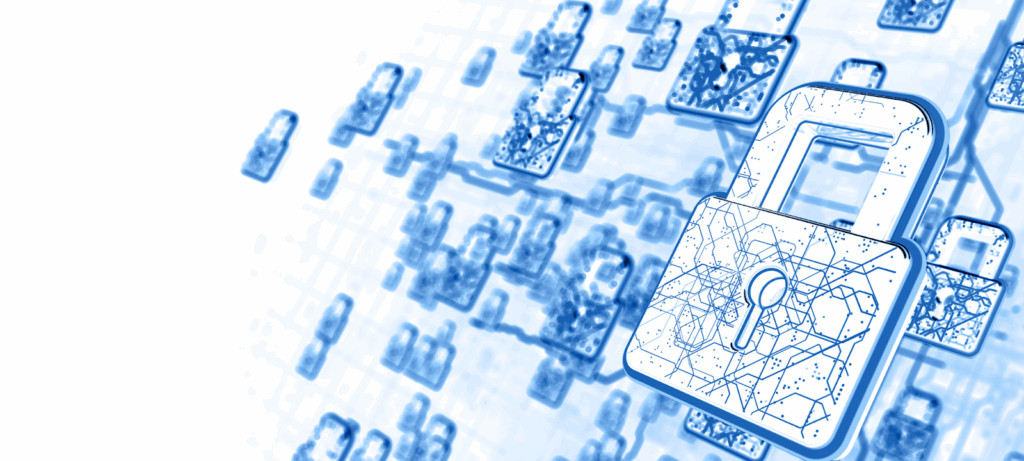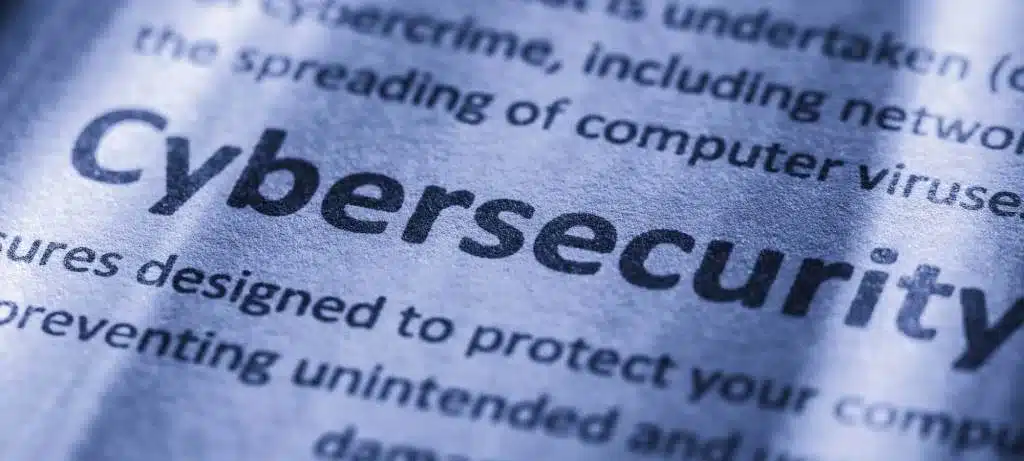
Moving Beyond Reactive Security
Traditional security strategies have largely focused on reacting to attacks once they occur.
Firewalls, intrusion detection systems, and antivirus solutions alert teams after suspicious activity has already been identified. While these tools remain important, they are not enough to defend against today’s rapidly evolving threat landscape.
Proactive threat detection changes the paradigm by emphasizing prevention rather than reaction.
Instead of waiting for malicious activity to trigger alerts, the security team is responsible for actively searching for weak points, analyzing unusual behaviors, and identifying potential threats before damage occurs.
This proactive approach reduces response times, improves visibility across the IT environment, and helps organizations strengthen their overall security posture.
For small and mid-sized businesses (SMBs), which often lack the resources of large enterprises, the shift toward proactive detection is especially critical. Proactive detection helps identify and address security risks before they escalate.
It empowers security operations to mitigate risks early, neutralize threats before they spread, and maintain business continuity in the face of advanced cyberattacks. Proactive detection also helps mitigate cyber threats by preventing attacks before they cause harm.

Cyber Threat Hunting: Anticipating Attacks Before They Strike
Cyber threat hunting is the practice of proactively searching through networks, systems, and datasets to uncover malicious activity that may have evaded automated defenses.
Active threat hunting is a proactive approach that goes beyond automated monitoring, using specialized tools and manual analysis to identify threats before they cause harm.
Unlike reactive monitoring, which waits for alerts from traditional security tools, threat hunting assumes that threats already exist within the environment and focuses on identifying them before they cause disruption.
Threat hunters analyze system logs, user behavior, and network traffic to find hidden threats that may evade detection by routine security measures.
This process often reveals hidden threats, such as advanced persistent threats (APTs) or insider-driven compromises, which may bypass standard detection mechanisms.
By combining threat intelligence with advanced hunting methodologies, organizations can discover potential risks early and close security gaps before attackers exploit them.
For SMBs, threat hunting provides a powerful layer of defense that enhances visibility, reduces dwell time of attackers, and supports a more resilient security posture.
The expertise and vigilance of the threat hunter are crucial in strengthening organizational security and detecting sophisticated cyber threats.

Understanding Modern Cyber Threats Facing SMBs
The modern cyber threat landscape is expanding at an unprecedented pace, and small to mid-sized businesses (SMBs) are increasingly in the crosshairs.
Attackers no longer limit themselves to high-profile enterprises; instead, they often target smaller organizations with fewer resources, knowing that defenses may be weaker.
Today’s most pressing cyber threats include ransomware, phishing campaigns, business email compromise, and advanced persistent threats (APTs).
Attackers are also leveraging emerging threats such as supply chain compromises and AI-driven attacks, which adapt quickly to evade traditional defenses. Insider threats—whether malicious or accidental—further complicate the security environment.
External threats, on the other hand, originate outside the organization’s network boundaries and are significant because they expose vulnerabilities that may not be visible internally.
The consequences of these attacks can be devastating: financial loss, prolonged downtime, reputational damage, and even regulatory penalties. A data breach can result in loss of customer trust, legal repercussions, and significant financial costs.
For SMBs, where every hour of downtime can disrupt revenue and customer trust, a single breach can have long-lasting impact. In addition to reputational damage, financial institutions are frequent targets of threat actors seeking financial gain.
To stay protected, businesses must shift from relying solely on perimeter defenses toward proactive threat detection and hunting strategies that continuously monitor for anomalies, identify potential attacks, and adapt to evolving adversary tactics.
Addressing evolving threats requires adaptable and proactive security measures to keep pace with the constantly changing risk landscape.

Why a Proactive Threat Approach Strengthens Security Posture
A purely reactive security model leaves organizations one step behind attackers.
Waiting for alerts or incident reports means threats may already have compromised critical systems by the time they are discovered. For small and mid-sized businesses, this delay can result in costly downtime, stolen data, and long-term reputational damage.
Adopting a proactive threat approach fundamentally strengthens an organization’s security posture. Proactive hunting involves actively seeking out threats before they trigger alerts, in contrast to reactive threat hunting, which responds to incidents after they occur.
By actively searching for vulnerabilities, suspicious activity, and hidden threats, security teams gain visibility into their entire attack surface.
This proactive nature allows them to detect anomalies, neutralize risks earlier, and prevent malicious activity from escalating into full-scale breaches.
Another advantage of a proactive model is its adaptability.
As threat actors develop new tactics, organizations that rely on proactive threat detection and threat hunting can evolve their defenses in real time.
Instead of relying solely on known indicators, analysts focus on identifying unknown threats, ensuring stronger resilience against emerging risks.
Ultimately, this approach minimizes damage, reduces incident response costs, and creates a layered defense strategy that prepares SMBs to withstand today’s evolving cyber threats.

Advanced Threat Hunting: Techniques and Methodologies
Advanced threat hunting goes beyond basic monitoring by applying structured methodologies to identify both known and unknown threats.
Instead of waiting for suspicious alerts, threat hunters proactively search through logs, network traffic, and endpoint data to uncover hidden risks that traditional tools may overlook.
Key threat hunting methodologies include:
- Hypothesis-driven hunting: Analysts develop a theory based on threat intelligence or observed anomalies, then test it against the environment.
- Data-driven hunting: Large volumes of network and endpoint data are analyzed to spot unusual activity or attack patterns.
- Intelligence-driven hunting: Threat intelligence informs hunters of new tactics, techniques, and procedures (TTPs) used by threat actors, guiding proactive searches.
Modern threat hunting platforms integrate logs from security information and event management (SIEM) systems, intrusion detection systems (IDS), and endpoint detection and response (EDR) tools.
Combined with expertise from threat analysts, these platforms help organizations quickly identify malicious activity, mitigate risks, and improve their overall security strategies.
By implementing advanced threat hunting techniques, businesses not only detect active cyber threats faster but also continuously refine defenses to stay ahead of adversaries.

Proactive Threat Detection Techniques for Today’s IT Environment
Modern IT environments are complex, spanning on-premises systems, cloud platforms, remote devices, and third-party integrations. This diversity creates an expanded attack surface that requires proactive threat detection techniques to stay secure.
Some of the most effective approaches include:
- Behavioral analytics: Tracking user behavior and system activity to spot unusual patterns that may indicate malicious intent.
- Endpoint detection and response (EDR): Continuously monitoring endpoints to identify potential threats that bypass traditional antivirus solutions.
- Network traffic analysis: Examining network traffic for anomalies or known indicators of compromise that reveal active or hidden threats.
- Threat intelligence integration: Leveraging cyber threat intelligence feeds to stay ahead of emerging threats and anticipate attacker tactics.
- Machine learning: Applying AI models to detect deviations in normal activity, enabling teams to proactively detect anomalies and unknown attack patterns.
When combined, these techniques give security teams the ability to identify both known and unknown threats, strengthen the organization’s security posture, and proactively respond to risks before they escalate into security incidents.
For SMBs, adopting these techniques within an existing security stack offers a cost-effective way to gain enterprise-level visibility and protection against an ever-evolving threat landscape.

When Advanced Threats Bypass Traditional Defenses
Traditional defenses—such as firewalls, antivirus tools, and intrusion detection systems—remain essential, but they are often insufficient against today’s advanced threats.
Attackers continuously refine their tactics, exploiting zero-day vulnerabilities, leveraging social engineering, and deploying stealthy malware designed to evade signature-based detection.
One of the biggest challenges is that advanced persistent threats (APTs) and other emerging threats can remain undetected for weeks or even months.
During this dwell time, attackers move laterally across networks, steal credentials, and access critical assets without triggering obvious alerts. Standard defenses rarely detect this malicious activity until the damage is already done.
This is where proactive threat detection and advanced threat hunting provide the advantage.
By monitoring unusual behavior, identifying deviations in network traffic, and integrating threat intelligence, security analysts can uncover hidden activity before it escalates into a full-scale breach.
For SMBs, adopting a proactive approach means building resilience against threats that slip past traditional defenses, reducing risk exposure, and ensuring stronger cyber defense strategies in an increasingly hostile digital landscape.

How Both Threat Hunting and Threat Intelligence Work Together
While threat hunting focuses on actively searching for malicious activity within an organization’s environment, threat intelligence provides the critical context needed to make those searches effective.
Used together, they form a powerful combination that strengthens an organization’s cyber defense.
Threat intelligence supplies information on known attack patterns, tactics, techniques, and procedures (TTPs) used by threat actors across the global threat landscape.
This includes details on known indicators of compromise, malicious domains, and emerging adversary behaviors. When threat hunters apply this intelligence, they can more quickly identify suspicious activity and predict potential threats that may otherwise remain hidden.
Conversely, the findings uncovered during proactive threat hunting feed back into the intelligence cycle, enriching the knowledge base available to security teams and incident responders.
This loop ensures that defenses continuously evolve alongside advanced cyber threats.
By integrating both threat hunting and threat intelligence, organizations gain greater visibility into their IT environments, shorten detection and response times, and improve their ability to mitigate risks before they impact critical assets.

Detection and Response: Building a Resilient Security Operations Center
A strong detection and response framework is essential for organizations looking to withstand today’s cyber threats.
At the heart of this framework is the Security Operations Center (SOC), where security analysts, incident responders, and threat hunters work together to detect, investigate, and neutralize threats.
Modern SOCs rely on security information and event management (SIEM) platforms, endpoint detection solutions, and intrusion detection systems to gather and correlate data across the entire attack surface.
These tools enable teams to detect anomalies, identify potential cyber threats, and trigger automated responses that contain incidents quickly.
However, the SOC must go beyond monitoring — it must also adopt a proactive approach.
By integrating proactive threat detection techniques and threat hunting methodologies into daily workflows, SOCs can uncover hidden threats that evade automated defenses. This strengthens the organization’s ability to respond effectively, even against advanced persistent threats.
For SMBs, a resilient SOC doesn’t always mean building one in-house.
Partnering with managed detection and response (MDR) providers offers access to enterprise-level expertise and tools without the cost burden.
This ensures that smaller organizations can still benefit from 24/7 monitoring, faster incident response, and a more adaptive security posture.

Stopping Cyber Attacks with AI and Machine Learning
Traditional security tools often struggle to keep pace with the scale and sophistication of today’s cyber attacks.
Attackers leverage automation and advanced evasion tactics, making it difficult for manual processes or static defenses to respond quickly enough. This is where artificial intelligence (AI) and machine learning (ML) are transforming cybersecurity.
By analyzing vast amounts of network traffic, logs, and user activity, AI-driven systems can detect anomalies that indicate malicious activity long before a human analyst could spot them.
Machine learning models continuously learn from new data, enabling them to recognize known indicators as well as unusual behavior that signals unknown threats.
These technologies support proactive threat detection by identifying subtle patterns, correlating events across the entire attack surface, and predicting potential attacks.
They also enhance detection and response workflows by automating repetitive tasks, allowing security analysts to focus on high-priority investigations.
For SMBs, incorporating AI and ML into their security strategies provides enterprise-level defense capabilities without requiring large in-house teams.
As advanced technologies continue to evolve, AI-powered tools will remain central to building adaptive, scalable defenses against advanced cyber threats.

Leveraging Known Indicators to Identify Unknown Threats
In cybersecurity, known indicators—such as malicious IP addresses, file hashes, or domain names—play an important role in identifying attacks.
However, modern adversaries constantly change their tactics to bypass these signatures, leaving organizations vulnerable to unknown threats that don’t fit established patterns.
A proactive strategy combines these known indicators with behavioral analysis and anomaly detection to uncover hidden threats. For example, even if a specific malware variant is not in a database, unusual user behavior or suspicious network traffic may reveal its presence.
This process is where threat intelligence focuses on contextual data. By correlating known attack patterns with activity in the local environment, security teams can anticipate potential cyber threats and recognize early warning signs of compromise.
Integrating this approach into the threat hunting process strengthens the organization’s security posture by enabling analysts to detect both specific threats and broader emerging threats.
As a result, businesses can neutralize attacks faster and prevent small anomalies from becoming full-scale security incidents.

Future of Proactive Threat Hunting in Cyber Defense
The cyber threat landscape will only continue to evolve, driven by increasingly sophisticated threat actors, the rise of advanced persistent threats, and the growth of complex hybrid IT environments.
Traditional defenses alone cannot withstand these pressures, making proactive threat hunting a cornerstone of modern cyber defense.
Looking ahead, the integration of artificial intelligence, machine learning, and automated threat hunting platforms will reshape how organizations identify potential threats and respond to security incidents.
These advanced technologies will allow security analysts and hunting teams to proactively detect emerging threats, analyze unusual behavior, and adapt in real time to evolving risks.
The future will also emphasize collaboration: threat intelligence sharing across industries, combined with unified security operations, will help organizations of all sizes keep pace with advanced cyber threats.
For SMBs in particular, leveraging managed services and adopting a proactive approach ensures that they can defend their critical assets without overextending limited resources.
By embedding proactive threat detection, hunting, and intelligence into everyday operations, businesses can strengthen resilience, mitigate risks, and stay ahead of attackers in an ever-changing digital world.
Strengthen Your Cyber Defense with IMS Cloud Services
Proactive threat detection and hunting are no longer optional — they are essential for safeguarding your business in today’s evolving threat landscape.
By taking a proactive approach, your organization can detect hidden risks, respond faster, and protect critical assets with greater resilience.
Let IMS Cloud Services help you build a stronger, more secure cybersecurity strategy tailored to your business needs.


Over 25 years of expertise in disaster recovery, backup, and security — partnering with your IT team to keep your business running.